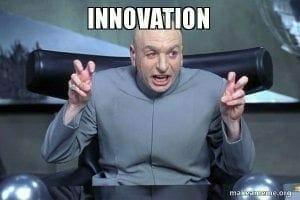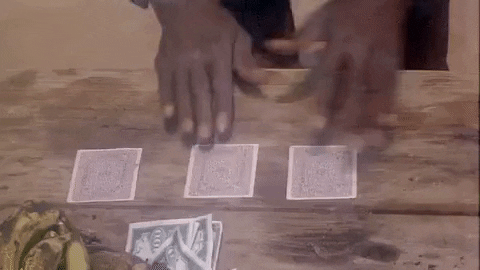Over the past year, Tesla (TSLA.NASDAQ) pillaged the public markets, splitting its stock with glee much to the chagrin of short selling groups like TSLAQ. But in the wake of Elon’s champagne wishes and caviar dreams, share price faded, exposing a nagging question, “What powered Tesla’s rise in the first place?”
Fundamentals

Tesla had a market cap of USD$307.63 billion as of end of trading on August 14, 2020 with total revenues reported in the last 10Q as $6.04 billion. That’s a price to sales ratio of 50.9 to 1. The electric car ‘pioneer’ was only able to scrape together $127 million as net income, while supporting nearly $27 billion in liabilities. The company sold a total of 367,500 cars in 2019, apparently more than it had done in the previous years combined.
As a peer comparison, Toyota Motors had a market cap of ¥23.43 trillion (USD$219.82 billion) as of market close August 14, 2020 with total revenues less financial services of ¥7.18 trillion (USD$67.34 billion). That’s a price to sales ratio of 3.26 to 1. The Japanese auto manufacturer carved out approximately ¥631.38 million (USD$5.92 billion) in net income while supporting a total of ¥32.76 trillion (USD$307.36 billion) in liabilities. The company sold a total of 10.74 million units in 2019, second only to Volkswagen.
In all reality, Tesla should be worth roughly $19.7 billion based on the above numbers alone, but classical fundamental analysis weakened with Silicon Valley’s rise to prominence. Admittedly, much of what tech has to offer breaks new ground and is intended to service a market yet to be developed, but in the absence of real-world applications and case studies, the Dunning-Kruger effect takes hold. Ridiculous blue-sky scenarios are ascertained by financing institutions, creating baseless market valuations that proportionally line their pockets.
Milestones

Silicon Valley hubris and short-term investor greed has developed a corporate culture of rainmakers and Musk in one of the worst offenders. Here is a small sample of his promises/fibs:
- Musk promised to manufacture 500,000 units by 2020, but then bumped up the date to 2018. His initial deadline year is almost at an end, and he has yet to meet that mark.
- Full autonomous Tesla vehicles by 2017: three years and at least four driver deaths later, he’s still short of that goal.
- January 2016, Musk promised a summon feature that will work “anywhere connected by land and not blocked by borders”, meaning you could summon your car parked in a New York parking lot to meet you in Los Angeles. Nothing even close to this is possible.
- Along that line, Musk stated that Tesla would have one million robo taxis on the road in 2020. Not even close technically and the regulatory approvals/amended legalities this effort requires could take years to still hammer out.
Every time Musk makes these promises, it impacts share price positively and since he openly admits to being unable to meet self-proclaimed deadlines, his impossible claims are tantamount to stock manipulation, notwithstanding his false 2018 claim that he had funding to take the company private.
Financial wizardry

Tesla accountants have been cooking the books for a while now to show the world positive cash flow after multiple billion-dollar financings failed to produce a profit, however, recently they’ve been hard at work misreporting regulatory credit sales to generate the income necessary to make Tesla eligible for listing on the S&P.
It should be noted at this point that Tesla only cleared $127 million net income in its last 10Q report due to the $400+ million worth of carbon credits the company sold to corporate entities like Fiat Chrysler. So, is Tesla a car manufacturer or a tax credit clearing house?
Regardless, its sale of ZEV and GHG credits, and subsequent loose accounting practices cannot go on forever as its biggest customers, Volkswagen and Fiat Chrysler will be entering the market next year and no longer have a need for Tesla’s support. Since demand for the company’s new Model Y is disastrous, it will be difficult for Musk’s clerks to produce a profit with their pens in 2021.
Product quality

Speaking of the Model Y, Tesla has never been good at assembly. Its product line is plagued by misaligned doors, poor paint jobs, dropping bumpers, etc. So much so, the company ranked last out of 30 brands in 2020 J.D. Power Initial Quality Study with 250 problems per 100 units. Industry average was 166 per 100 cars and in comparison, Toyota scored 177 per 100.
Even though there is a class action suit for the auto manufacturer’s poor paint jobs and the US National Highway Safety Administration has launched an investigation into Tesla’s older media control units in the Model S lines, defects have taken a back seat to Musk rocketing his Tesla Roadster into orbit.
Innovation

Tesla came out of the gate with the Model S, which, despite outlasting the per charge mileage of its competitors, still failed to live up to its own hype. Sales literature gauged the car’s capability at 265 miles before having to hook up to a charging station. However, in Motortrend’s real-world test of Tesla’s flagship EV in 2012, the Model S fell short of its predicted stamina. Traveling with no A/C, the car, even lowered on its air suspension with cruise control set to 65 mph, finished 11% under at 238 miles. Who knows how much it would have lost if there was music playing, GPS direction and charging devices like your smartphone or tablet?
Musk’s over-reaching and over-promised leaps into self-driving technology is now subject to an army of competitors including Google (GOOGL.NASDAQ), Uber (UBER.NYSE) and General Motors (GM.NYSE). His early advances in this field are lost and now at its fundamentals, a “fake news” driver-assist program.
With Tesla’s battery day tomorrow, massively missing its original announced date in April, Musk will probably end up doing one of three things: announce the replacement of cobalt on the million-mile battery, announce the purchase of a non-Congo cobalt mining asset or a deal with an American cobalt miner. Regardless of the aforementioned possibilities, it will be little more than a PR effort based on a sub-standard battery design – a design which had its butt whipped by EV startup Lucid in a recent mileage test comparing the Model S with Lucid’s Air. Million-mile batteries have no use, especially when no-one keeps their car longer than 11 years and with robo-taxis a distant hope, Tesla’s “innovation” will continue to be buried and stored in train cars, because no-one, including Elon, has any idea how to safely dispose of them. Tell me again how “clean” Musk’s brand of EV technology is?
In short, Tesla was only in the driver’s seat for a short time after its Model S release: fast forward to the present and Musk’s so-called innovation is just market manipulating bravado.
Brash attitude and celebrity made Musk the Honey Boo Boo of corporate CEOs – a standing upheld by market manipulators like the Fed and Softbank as well as investment rubes like Robinhood traders. Tesla’s value is based on rainmaking and the gullibility of FOMO trading. TSLAQ may have lost, but they certainly were not wrong. Musk has irresponsibly stolen the attention and capital from market peers who deserved it.

–Gaalen Engen


Leave a Reply